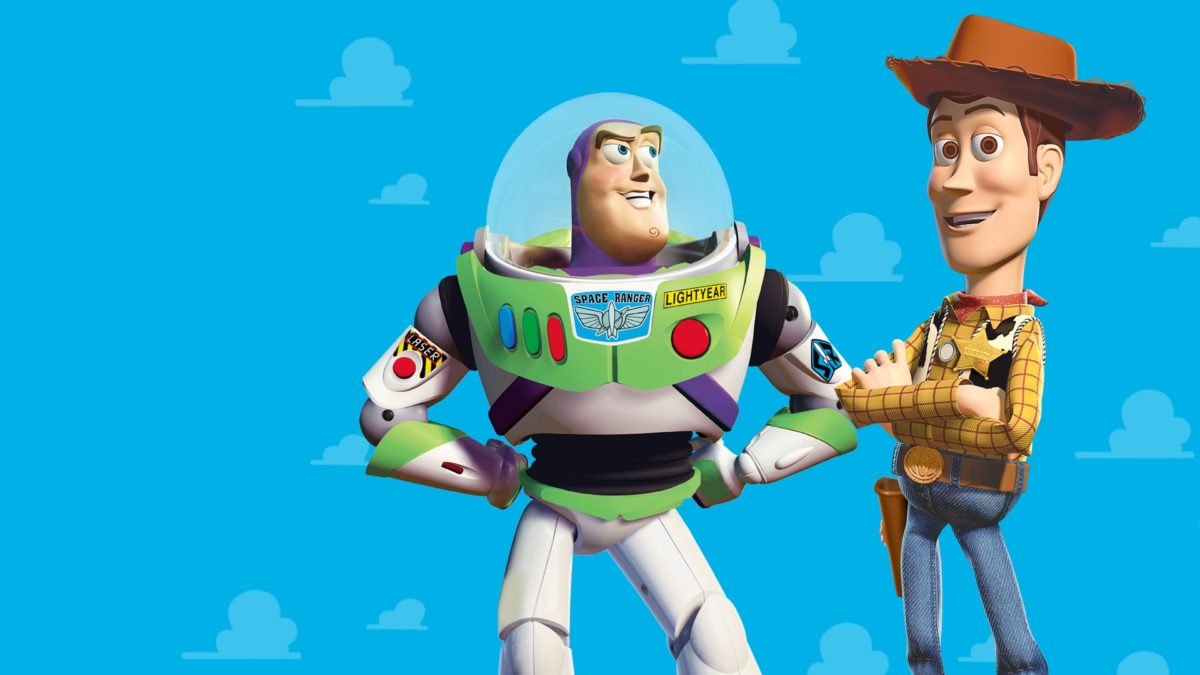None of them will ever love you the way I do
All three of the movies in the “Andy Trilogy” (as I’ve come to call it) are outright masterpieces, but none of them are perfect, and all of them are flawed in different ways. It’s actually my favorite series to debate best and worst because it reveals a lot about what different viewers prioritize.
As I rewatched these films, some of my favorites ever, I scribbled down some notes. Here they are in place of something coherent. Some day I intend to write a proper review, but this is what we have today.

What I love about Toy Story 1:
- The Buzz and Woody dynamic. Every phase of their feud and friendship is delightful and an achievement of screenwriting (not to mention voice acting). “YOU! ARE! A! TOY!”
- The economy of worldbuilding. It takes all of three scenes before you know the rules of the world and the personalities of all the characters.
- The existential crises. Every Toy Story features one or more characters struggling to define what they are and what their purpose is. Buzz’s loss of his space ranger identity still packs a punch, as does Woody’s confession that he knows Andy is growing out of him.
- The brilliant scene and shot construction. However much the film’s CGI looks dated, there’s no denying the brilliance of the film’s direction. The first reveal of Buzz is one of my favorite shots in all of cinema.
- The flexibility and roundness of the story’s themes and symbols. Is this a story of religious awakening? Of the importance of family and the fears of parenthood? Of the healing power of a shared sense of service? Sure! All of the above. Plenty others, too. The Toy Story movies are both simple and unique in their construction, allowing for morals (mostly) not too on the nose, yet still broad enough to support a huge variety of thematic readings.
- The giddy ending. I know it doesn’t make any damn sense that Buzz and Woody manage to fly to Andy’s car, but when Buzz shouts “this isn’t flying… this is falling with style!” and Woody replies “to infinity and beyond!” I get chills and choked up every time. Just perfection.
- Clever variety of cultural touchstones. One complaint I hear about Toy Story 2 & 3 is that they lean too hard on pop culture gags. I challenge those critics to rewatch the original and try to count how many references and parodies there are. Tons. From the horror pastiche of Sid’s room, to the fanaticism of the toy aliens, to the war movie parody of the toy soldiers, and more, they’re all here, and they’re all a joy. (In general I think the series has the right balance of pop culture immersion; toys are inherently commercial and symbolically representative things, so some amount of that makes sense.)
- The G-rated nastiness. Given its Disney pedigree, it’s easy to forget just how grumpy and mean the toys are to each other in this one. I love it. Buzz and Woody bicker with each other, of course, but it’s basically all the toys. They turn on Woody in an instant. Mr. Potato Head is an ass. And let’s not forget how relentlessly psychotic Sid is. The movie makes sure you know he’s really messed up and dangerous.

And then a couple things that don’t quite work in Toy Story 1:
- The dated visuals. Despite the brilliant decision to center the story on plastic toys to make stiff, blocky models look more appropriate, there’s no doubt this film suffers from age. Characters occasionally look robotic in their poses or uncanny in their expressions. Just as problematic is the film’s use of “gee-whiz” camera angles and techniques, especially in the first act. You can just tell that Pixar was restless to show off how the camera can float and fly and spin and dynamically generate reflections etc. etc. in CGI, even if those shots and techniques distracted from the story.
- Sid’s room and comeuppance. While the mutant monster toys are a fairly small part of the movie’s plot, I tend to think they’re the weakest part of the movie’s screenplay. The premise is too direct in its “looks can be deceiving; let’s all be kind to each other” themes. And while the toys’ revenge on Sid is cathartic, it feels like a violation of the series’ rules and spirit, especially as depicted in the sequels, where toys must remain interlopers.
In all, Toy Story is a masterpiece, but then so are its first two sequels, Toy Story 2 and Toy Story 3. It’s the runner-up best of the trilogy and still one of Pixar’s best despite their reign of triumphs in the 2000’s and 2010’s.
- Review Series: Tom Hanks
- Review Series: Top 100 (2009 List)
Is It Good?
Masterpiece: Tour De Good (8/8)
Dan is the founder and head critic of The Goods. Follow Dan on Letterboxd. Join the Discord for updates and discussion.

